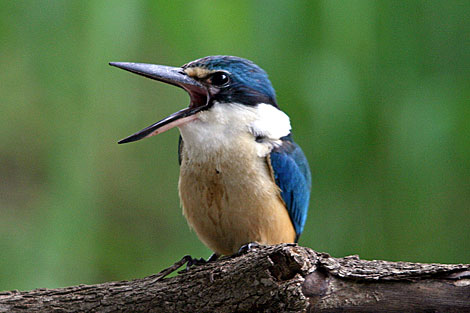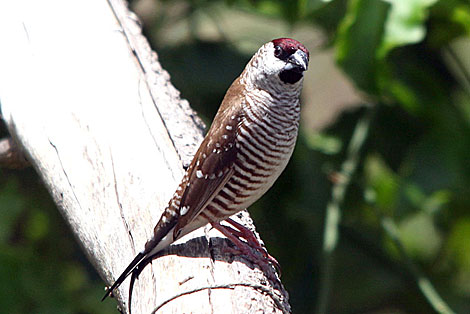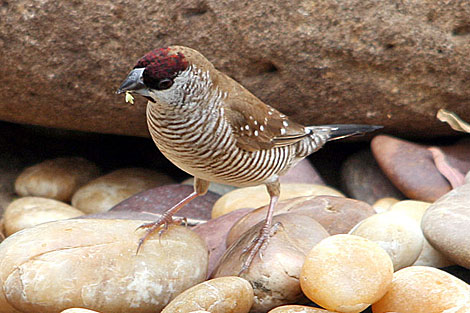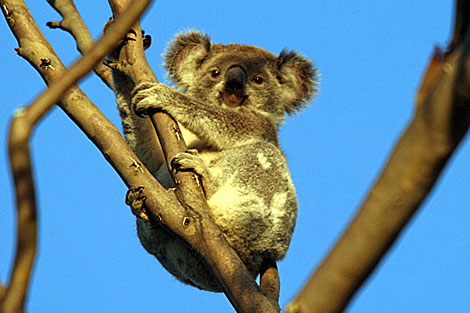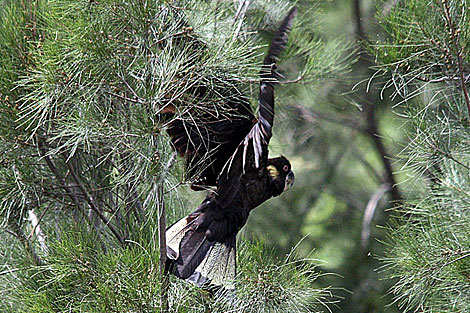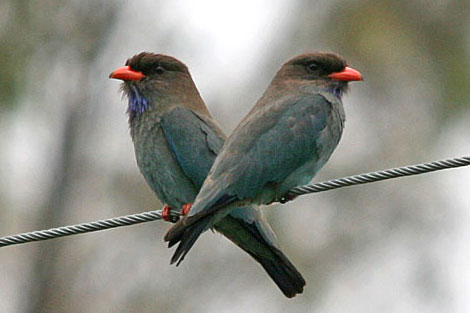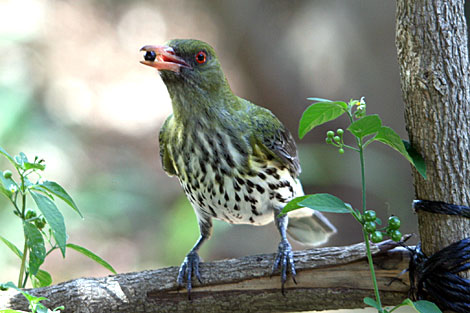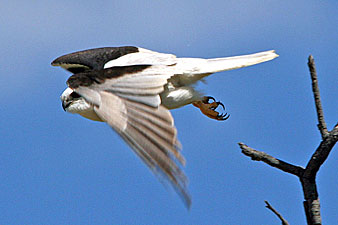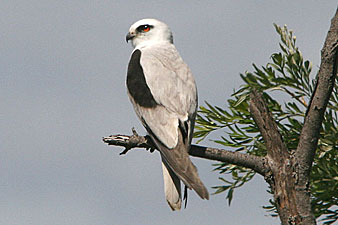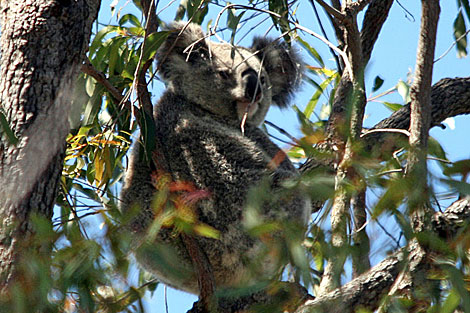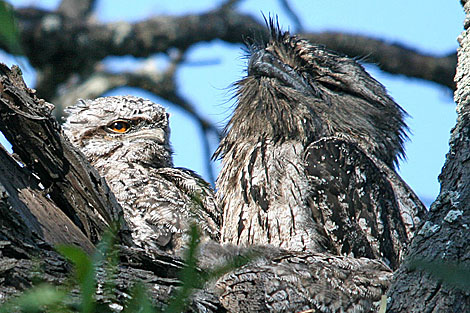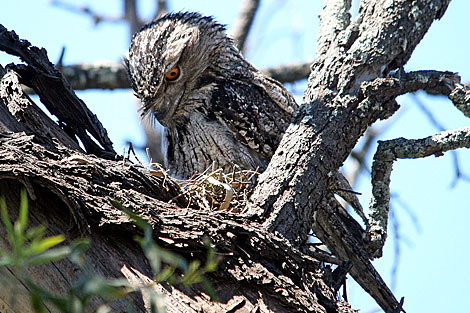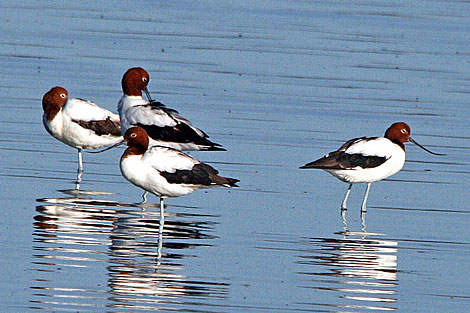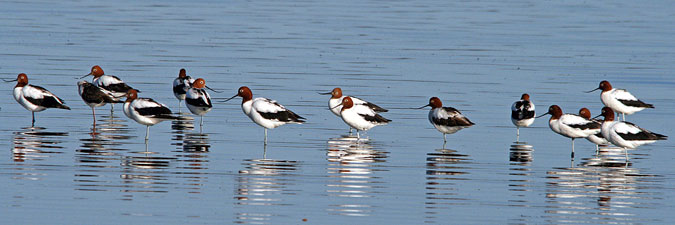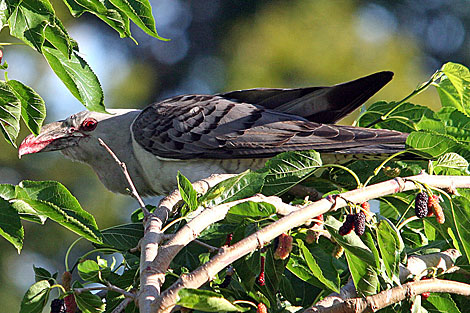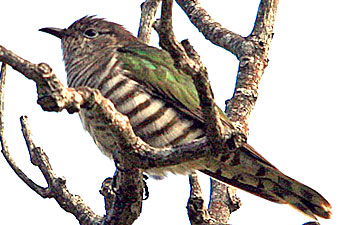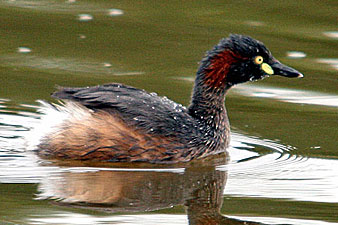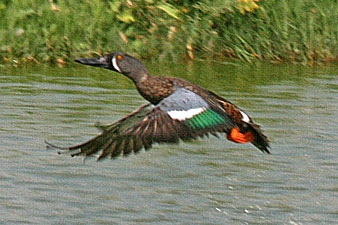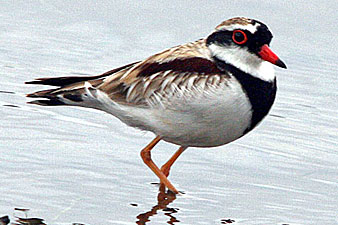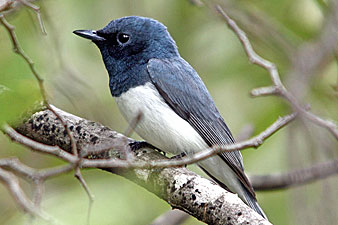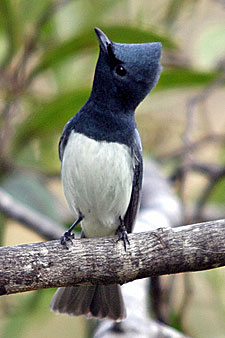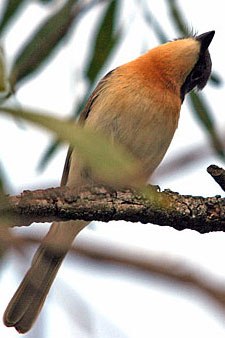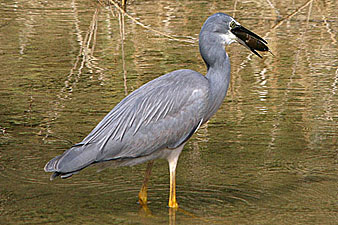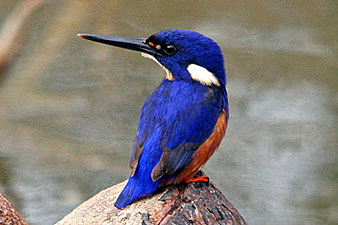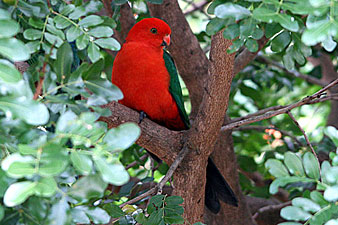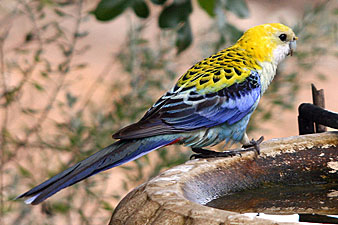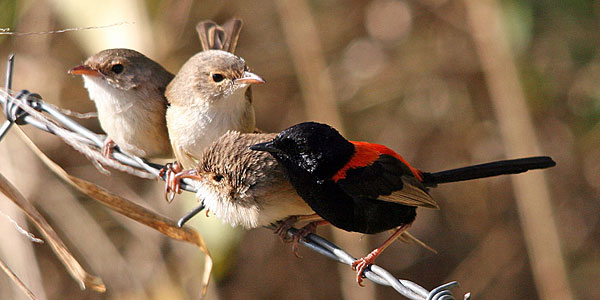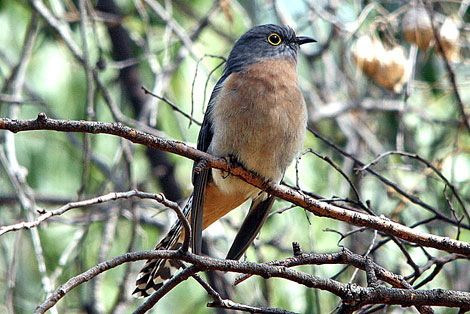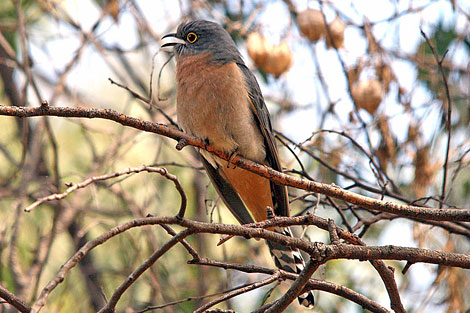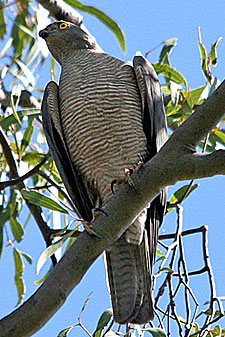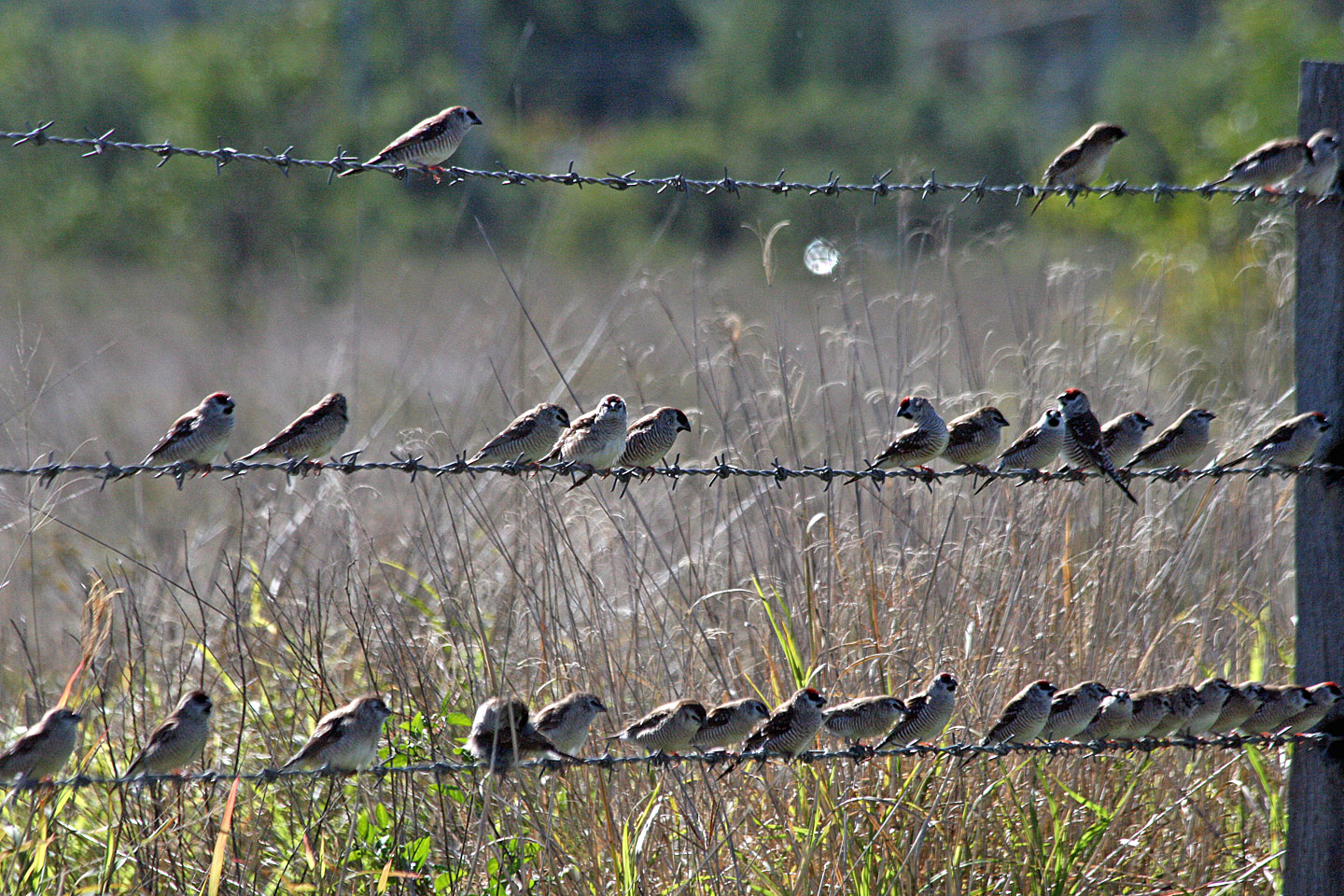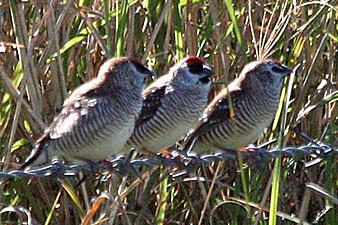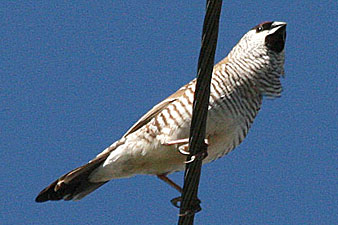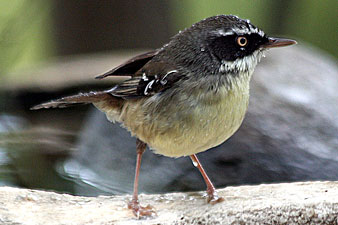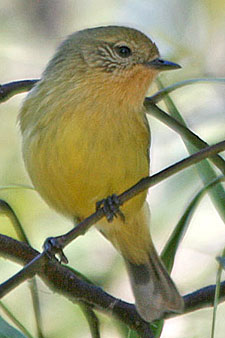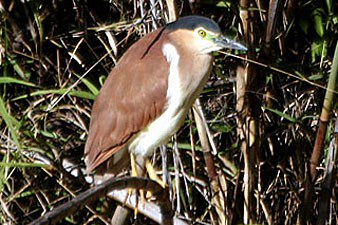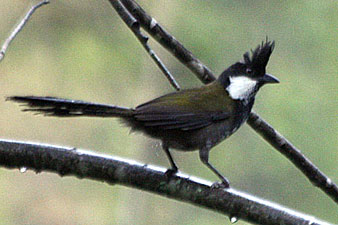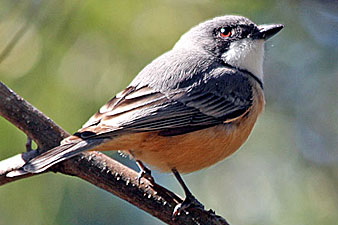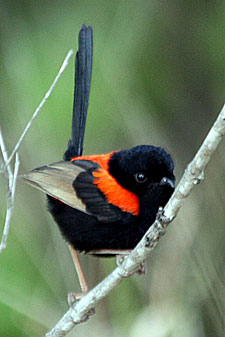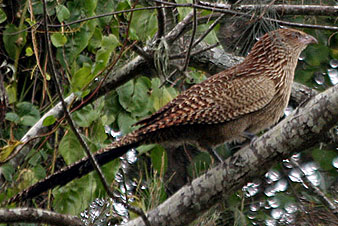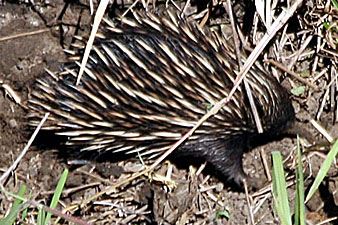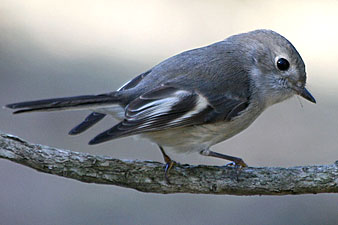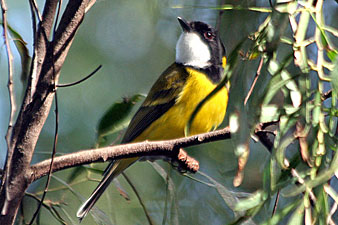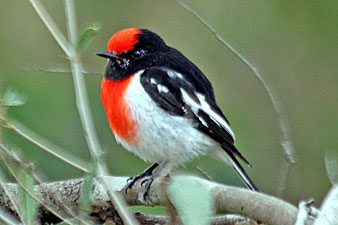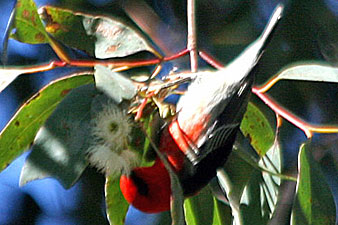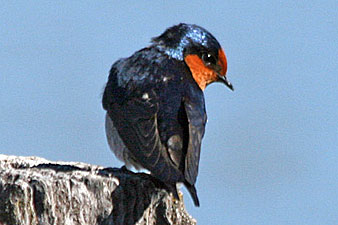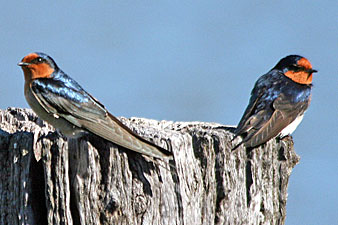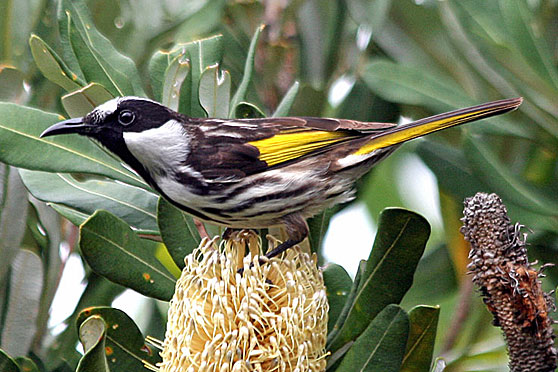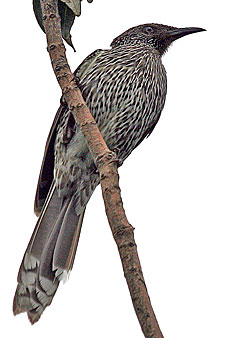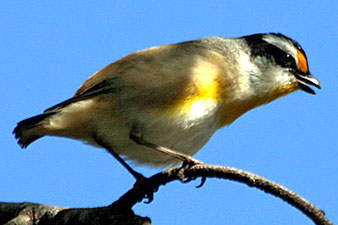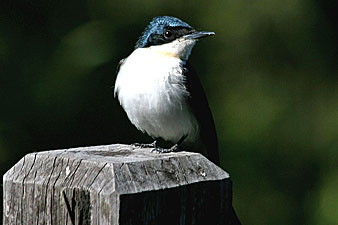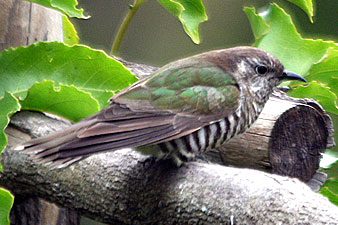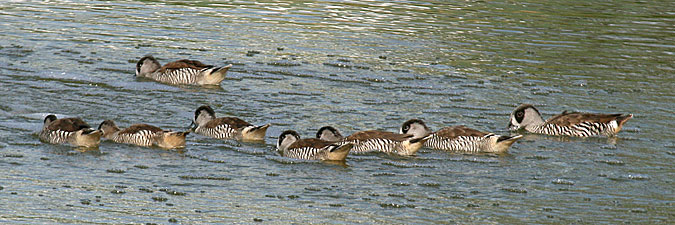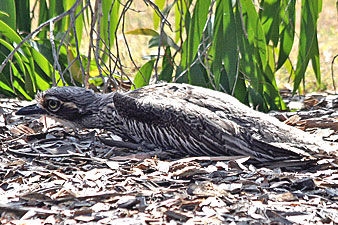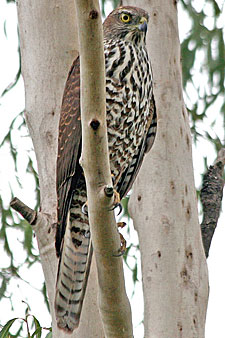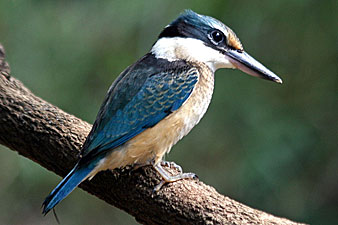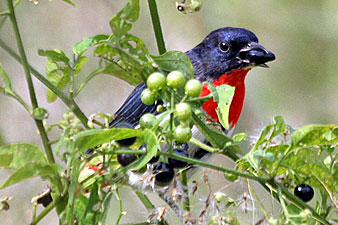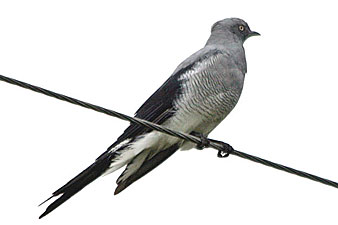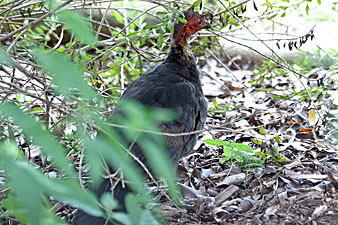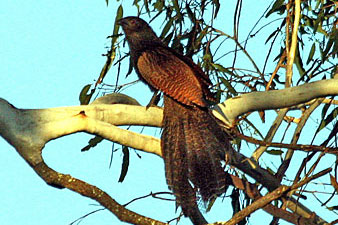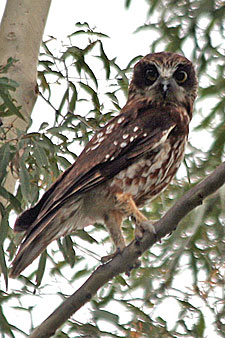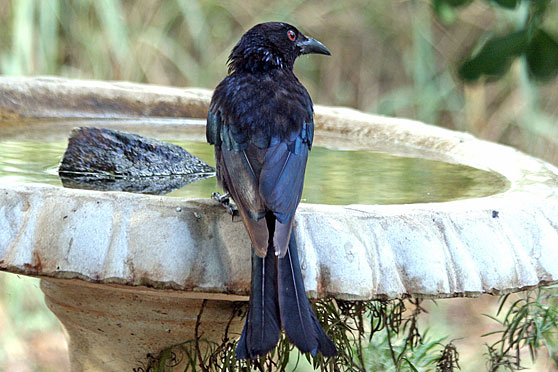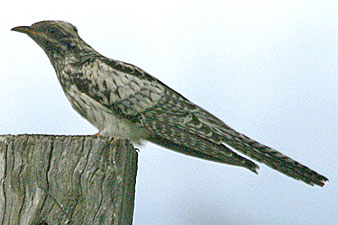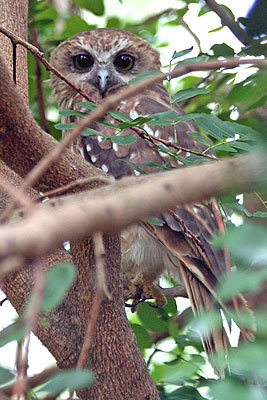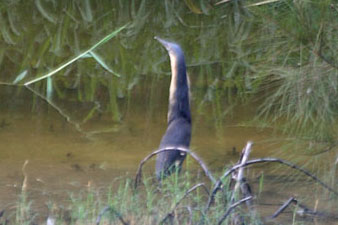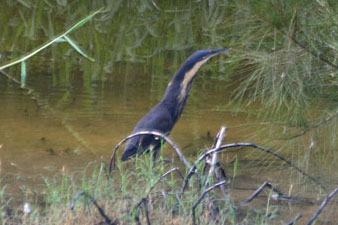|
birds australia bird guides guiding birding birdwatching brisbane queensland birds australia bird guides guiding birding birdwatching |
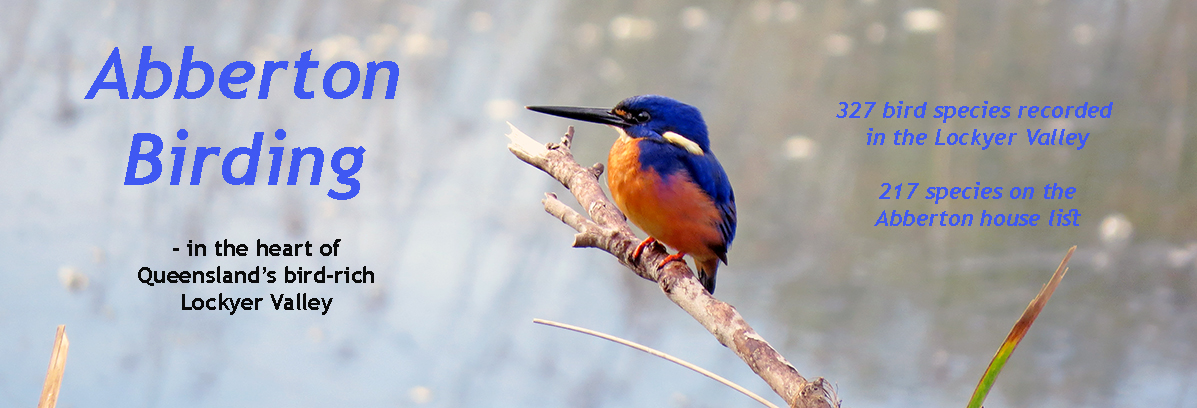
|
|
ALL PHOTOGRAPHS ON THESE PAGES ARE © BILL JOLLY UNLESS OTHERWISE INDICATED |
Current happenings - What's About?.... |

|
|
|
|
December, 2008 |
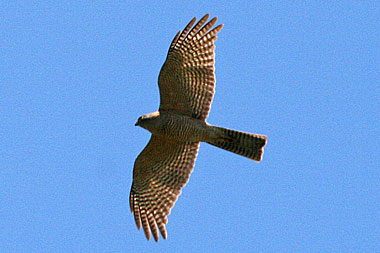
Collared Sparrowhawk - a regular around the garden. |
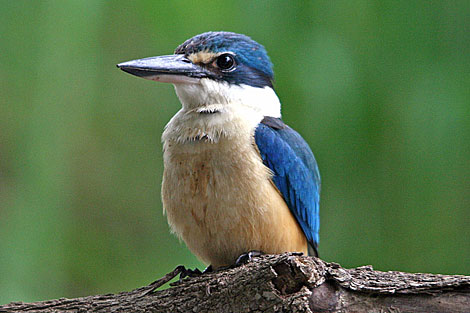
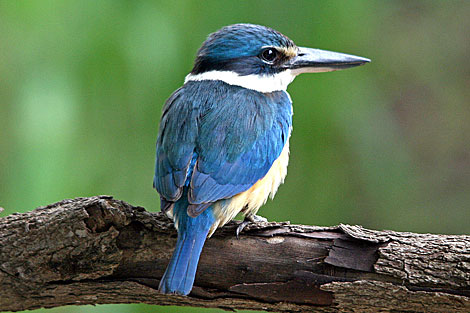
Sacred Kingfisher
This
Sacred Kingfisher was in the process of disgorging an enormous pellet.
|
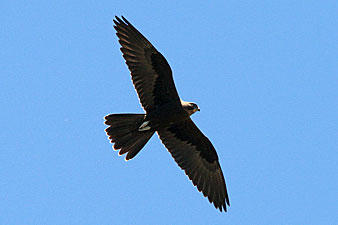
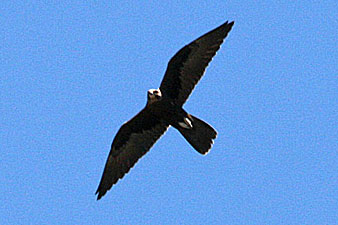
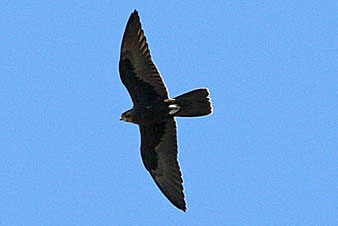
Black Falcon - from the verandah
|
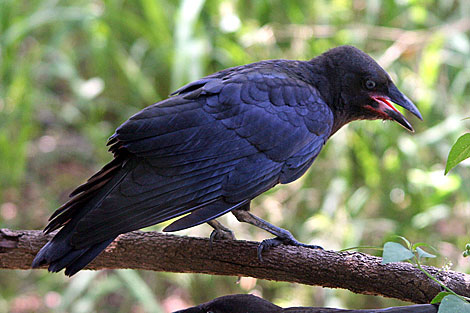
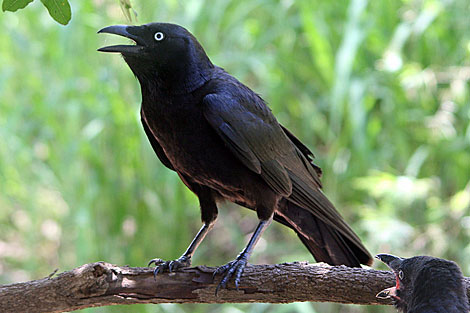
Torresian Crows Our local crows have managed to raise some young of their own young this year. As often as not they succeed only in
producing a Channel-billed Cuckoo, but now we have two adult
|
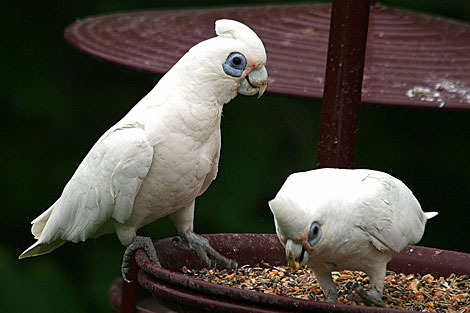
Little Corellas This feeder is usually the province of
pigeon and dove species or Galahs
|
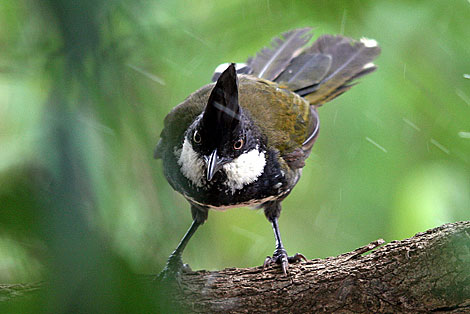
Eastern Whipbird - seen through the splashing of another in the birdbath below him.
|
|
|
|
|
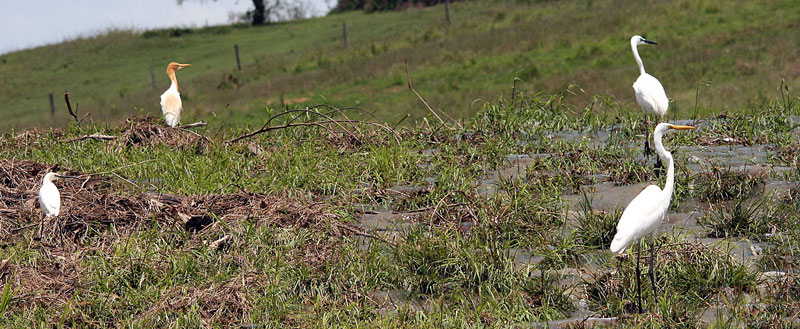 Little Egret, Cattle Egret, and two Eastern Great Egrets - the one at the back in full breeding flush, with black bill, blue/green skin on the face, and bright reddish legs. Heavy rain has caused a local stream to
burst over the dam wall put in its way by the land-owner
|
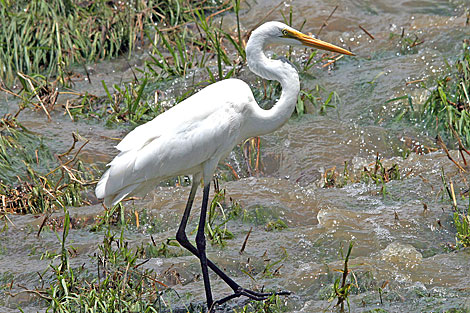
Eastern Great Egret
|
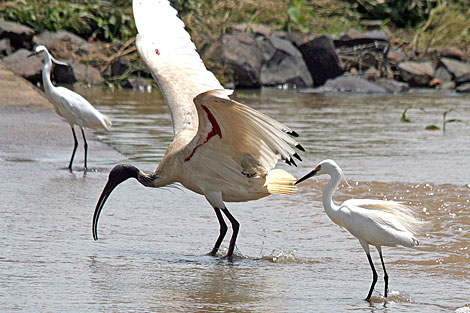
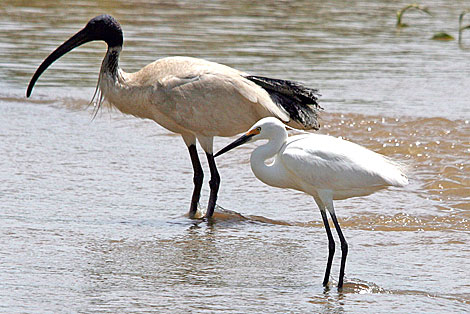
Australian White Ibis and Little Egret
|
|
|
|
|
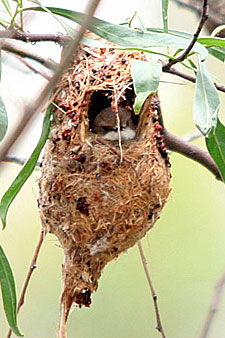
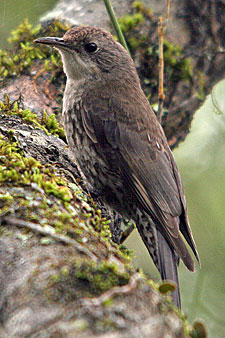
|
|
|
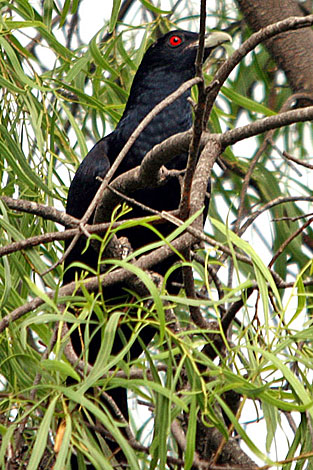
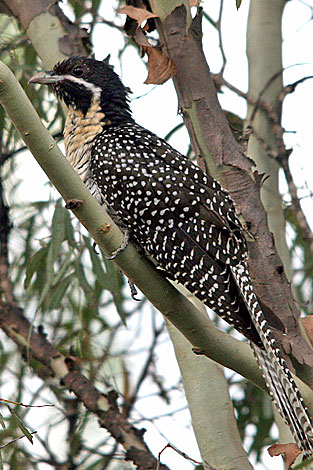
Eastern Koels Male and female in adjacent trees, and very much interested in each other.
|
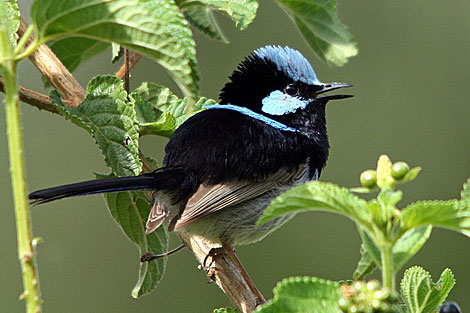
Superb Fairy-wren
|
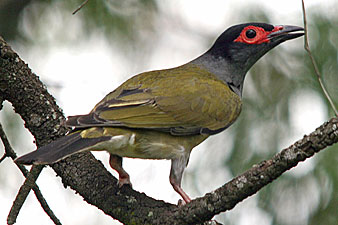
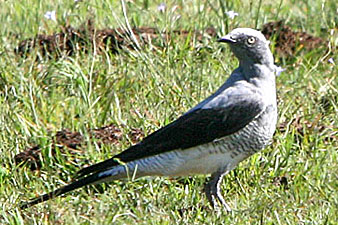
|
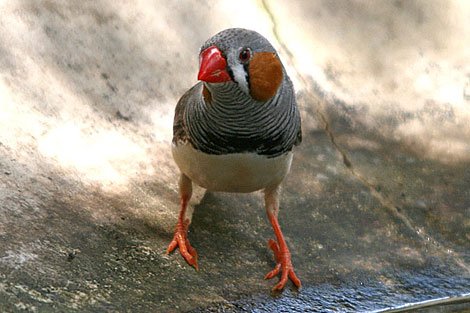
Zebra Finch |
|
|
|
|
|
Plum-headed Finches photographed through the window yesterday, |
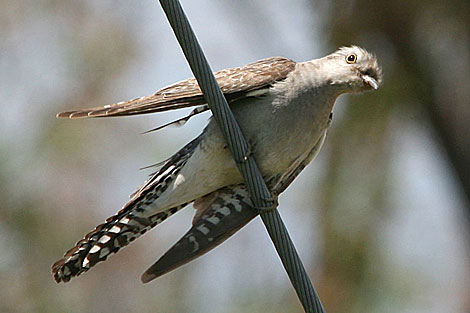
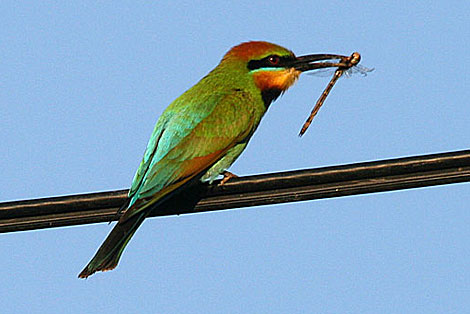


|
|
|
|
|
|
When
we moved onto Abberton, about 20 years ago, a few eucalypts along the old
fence-line by the road were the only mature trees we had here. Well,
it’s been working quite well. Our list of mammals has steadily grown over
the years, along with our bird list, We
were visited yesterday morning by four or five Yellow-tailed Black
Cockatoos. In
between these events, much of the other usual excitement was going on, a
raucous Channel-billed Cuckoo fly-by,
|
|
|
|
|
|
Our resident pair of
Dollarbirds seem to be
winning the battle for a nest hole in the big dead tree just across the
creek.
|
|
|
|
|
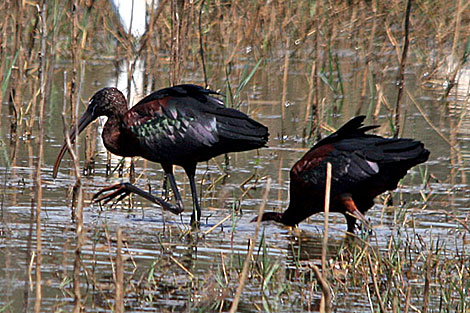
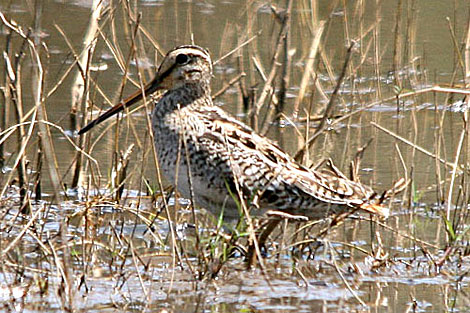


|
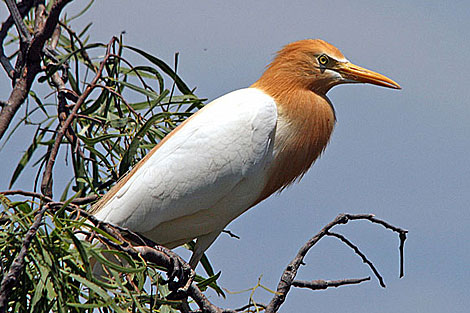
Cattle Egret
|
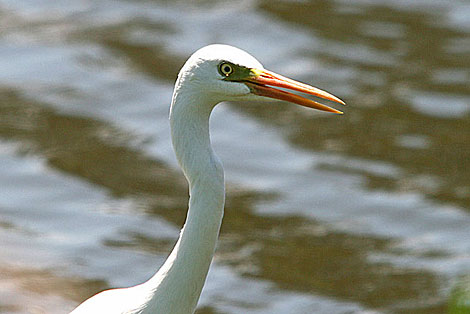
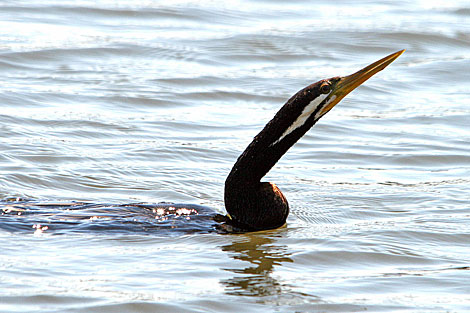


This Intermediate Egret shows one of the
features key to separating this species from the similar, larger, Eastern
Great Egret.
|
|
|
|
|
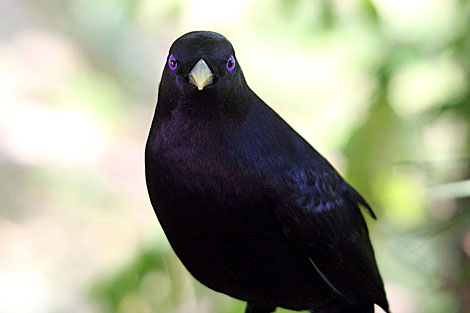 Satin Bowerbird Photographed at Mt Glorious, the male Satin Bowerbird takes six or seven years to attain this beautiful glossy blue-black plumage.
A party of fifty or so Plumheads have been regular in the local area for a few weeks.
We dropped in on friends the other day, and found koalas in the trees alongside the house.
|
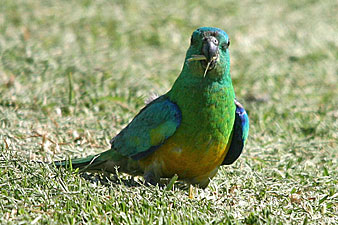
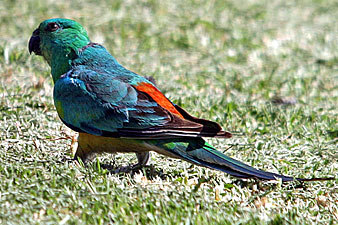 Red-rumped Parrot
This is the same nest that I photographed
a few weeks ago (lower
down the page), but now the young have hatched.
|
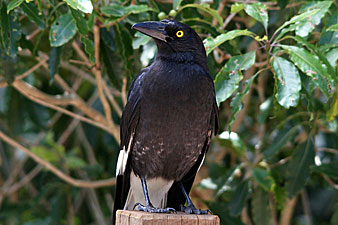
Pied Currawong
|
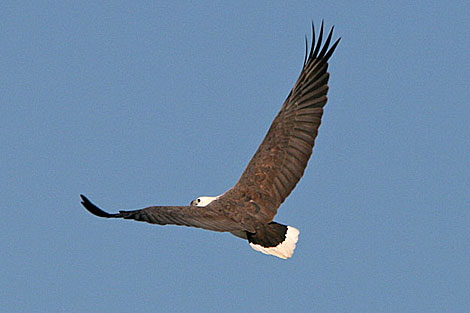
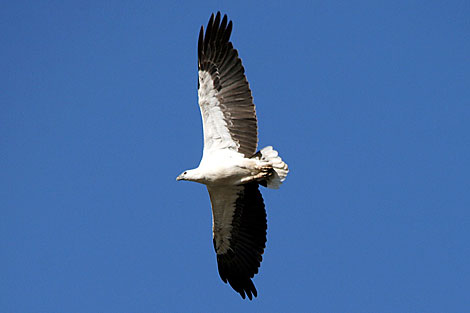
White-bellied Sea-eagle I know of two current nest sites of White-bellied Sea-eagles in the valley, but I don't doubt there are more. |
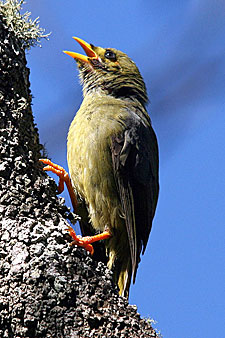 Bell Miner A colonial bird with an enchanting call, but somewhat aggressive habits, not unlike its cousin the Noisy Miner.
|
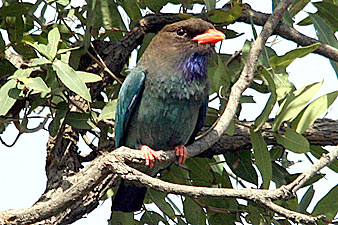
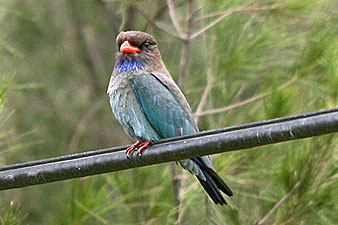
Dollarbird One of the later spring arrivals here,
Dollarbirds are a joy to have around. They glide and swoop around the garden
and over the creek,
|
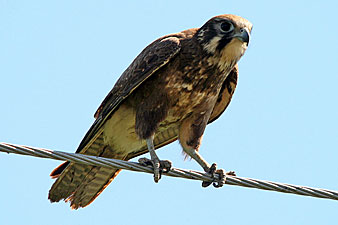
Brown Falcon
|
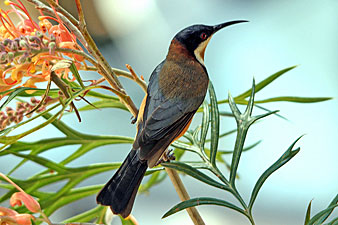
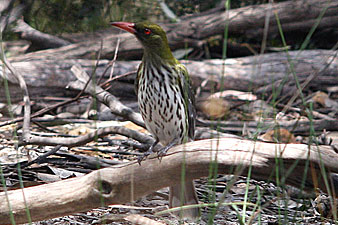
|
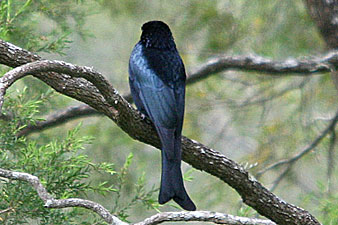
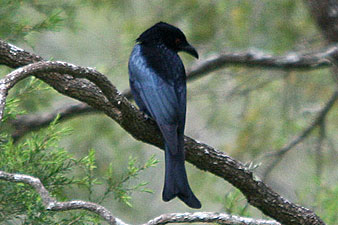
Spangled Drongo - conveniently distinctive, even from the rear.
|
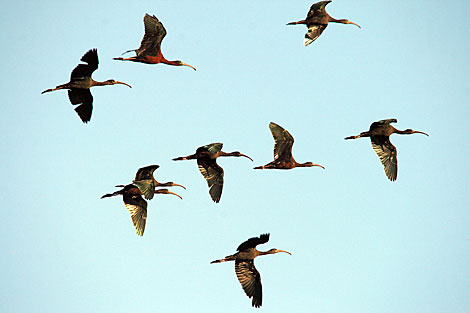
Glossy Ibis
|
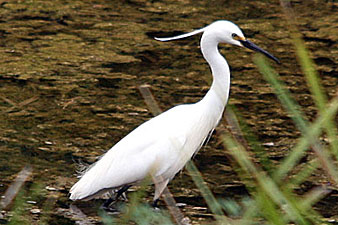
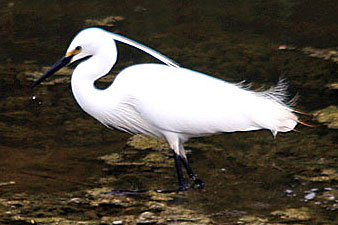
Little Egret - both pics taken from the verandah.
|
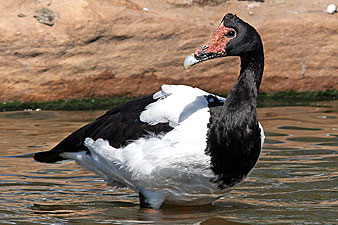
Magpie Goose
|
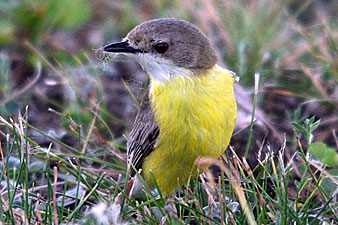
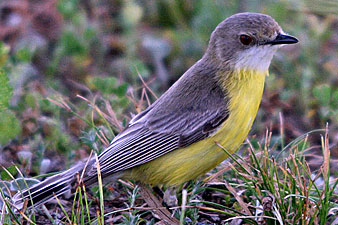
White-throated Gerygone This little bird is mostly seen in the tree-tops, but this one had found a supply of suitable nesting material on the ground, enabling me to get much closer than is usually possible. |
|
|
|
7 October, 2008 |
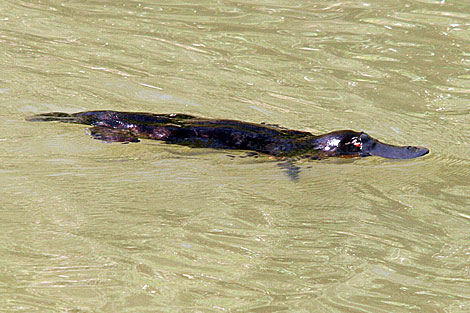
One of the bonuses of having Lockyer Creek flowing again was seeing this Platypus swimming past the house the other morning. |
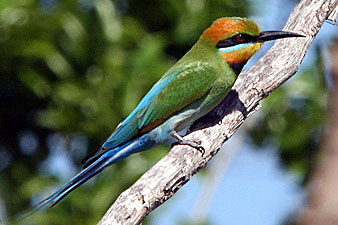
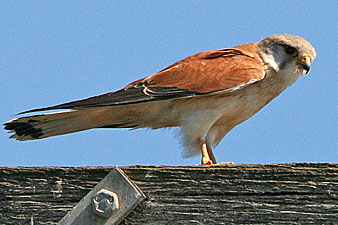
I’ve birded fairly solidly over the last ten days or so,
and seen more than 190 species in the process,
|
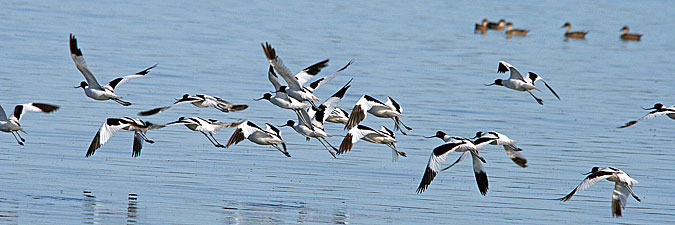
Red-necked Avocets
|
|
The local lagoons are full of birds, many Red-necked Avocets and Red-capped Plovers, and large numbers of at least 8 species of ducks.
Red-necked Avocets
|
|
|
|
Some local forest birding |
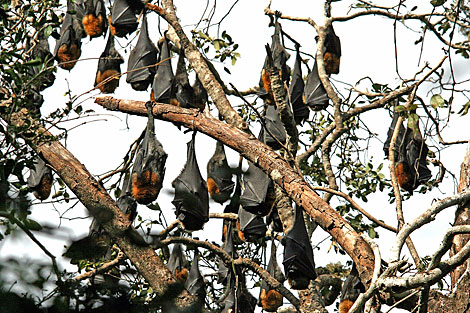
Grey-headed Flying Foxes
|
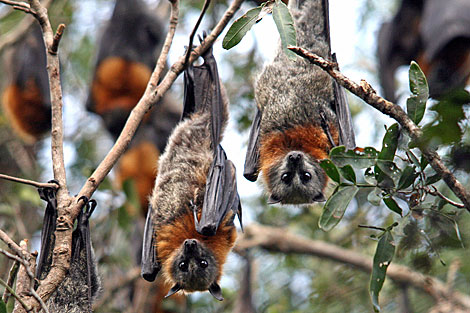
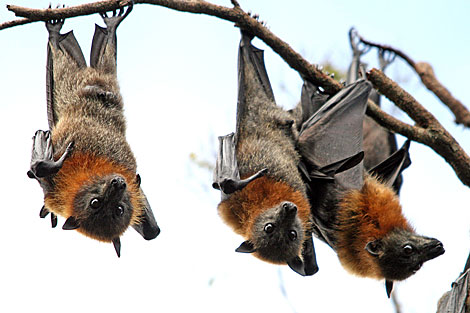
|
|
A daytime roost of thousands of
Grey-headed Flying Foxes has recently invaded what has been one of my favourite
spring-time I went back a few days later and
found the bats somewhat reduced in number – and a few more birds around.
|
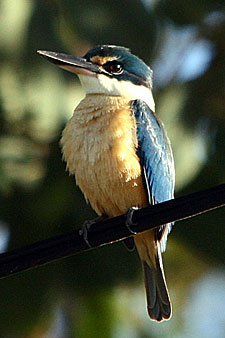
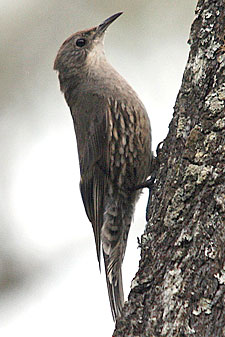
|
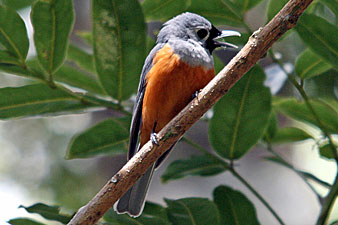
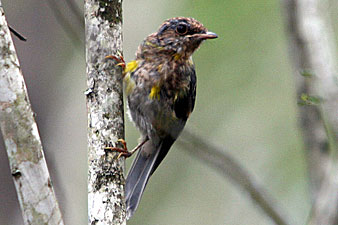 |
|
|
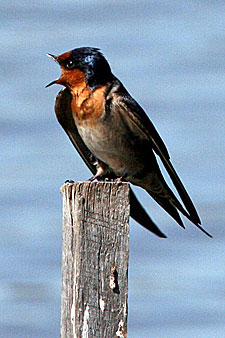
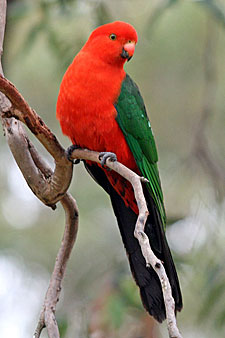
|
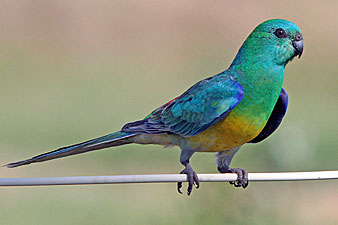
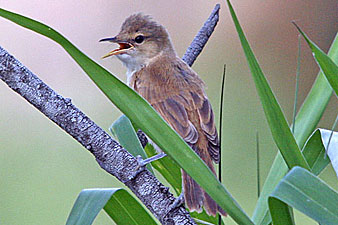 |
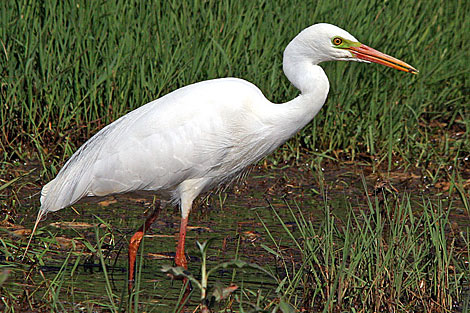 Intermediate Egret All four local egrets are in their full breeding flush
right now, providing an opportunity to see Eastern Great, Intermediate,
Little and Cattle Egrets
|
|
|
|
25 Sept 2008 |
|
Cuckoos abound
– ready to take advantage of the nesting that is either underway
or imminent.
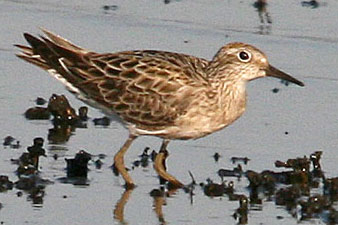
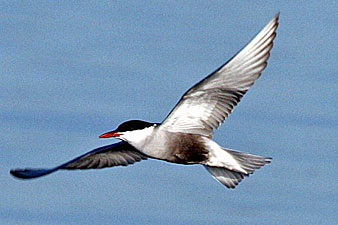
Lots of water around, and hundreds if not thousands of water birds including Red-capped Plovers and Red-necked Avocets, but no other sandpipers yet. Heaps of Australasian Shovelers, Pink-eared Ducks and so on.
|
|
|
|
8 Sept 2008 - Courting Leaden Flycatchers |
|
I can’t
imagine a more exhuberant suitor than a male Leaden Flycatcher, nor a
prettier courtee.
|
|
|
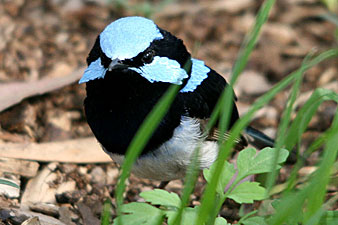 Superb Fairy-wren
|
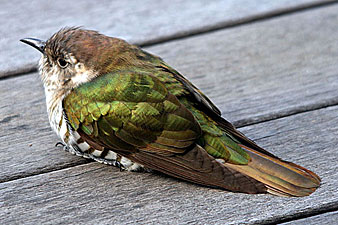
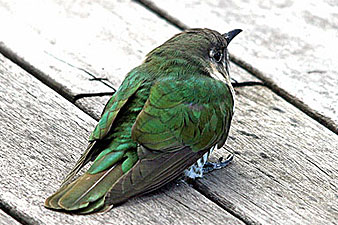
Shining Bronze-Cuckoo
|
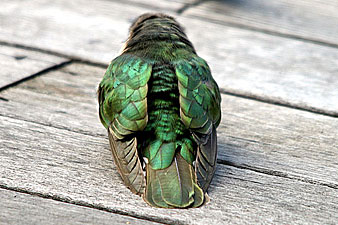
From the garden, I spotted a bronze-cuckoo on the verandah deck.
|
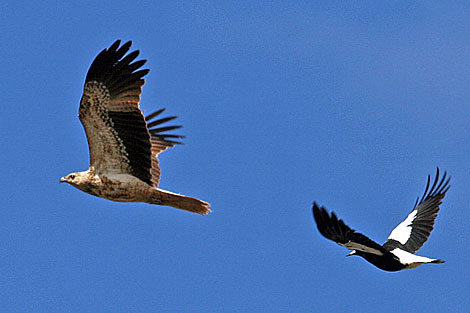
Whistling Kite and Australian Magpie Plenty
of raptors in or over the garden – Wedge-tailed Eagle, Brown Goshawk,
Collared Sparrowhawk,
|
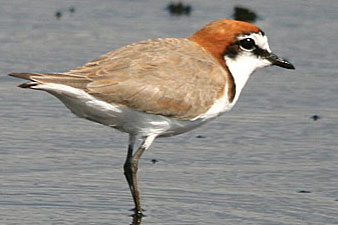
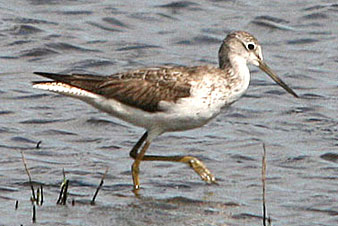
Saw my first Common Greenshank of the spring recently at a lagoon in the valley.
|
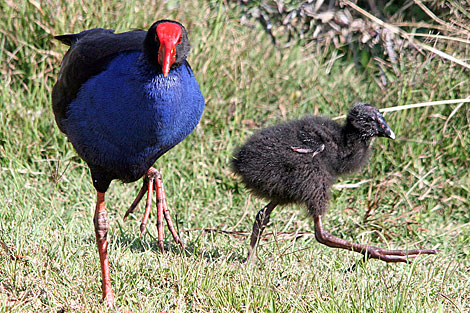
Purple Swamphen
|
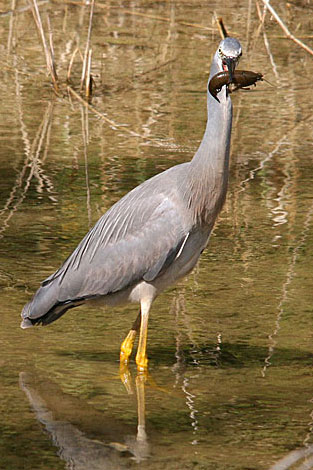
We watched this White-faced Heron from the verandah as it spent some time preparing a large freshwater-crayfish for consumption. It repeatedly tossed the crayfish in the air,
juggling it as it snipped off its two big front claws, dropping it in the water
frequently
|
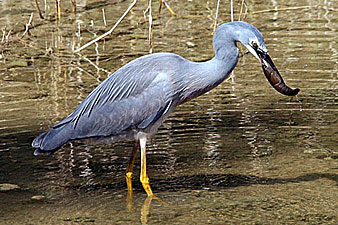
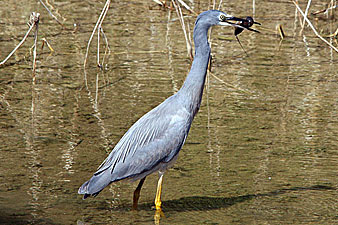
|
|
|
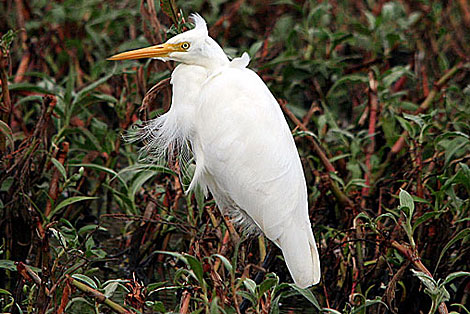
A well-plumed Intermediate Egret, but not yet showing the full colours of its breeding flush. |
|
|
|
31 August 2008 - Under attack! |
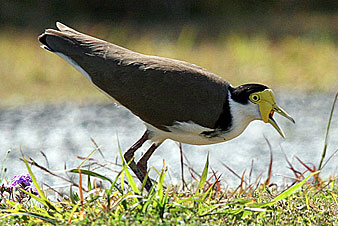
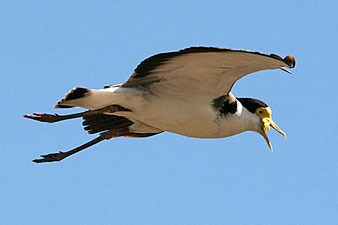 Masked Lapwing |
|
This-morning, I inadvertently wandered too close to some Masked Lapwing chicks. The parent birds quickly pointed out my mistake - first calling loudly, then taking to the air... and finally launching an all out attack, spurs raised and ready to strike!
|
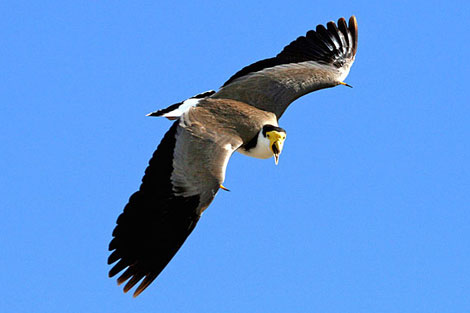
Masked Lapwing I hid behind the camera!
|
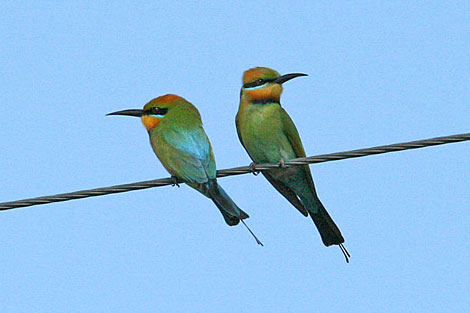 Rainbow Bee-eaters Rainbow Bee-eaters are busy pairing up and going through their aerial courtship. Just now the air is full of the sight and sounds of pairs of bee-eaters, gliding and swooping to bring morsels to each other.
|
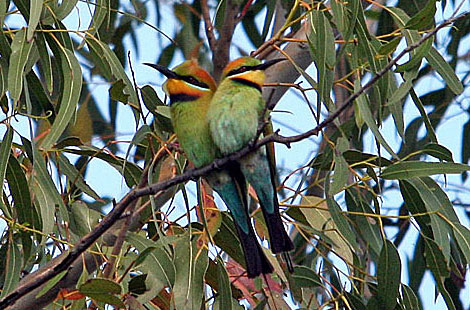
Rainbow Bee-eaters
|
|
|
|
30 August 2008 - Trying not to photograph |
|
I decided resolutely on Thursday morning not to take any more photos until I'd updated this website. Till an Azure Kingfisher dropped onto a perch in full view of the house! So I made an exception.
No
sooner was I back at my desk than a couple of King Parrots turned up right
outside my window,
Then,
when I went up to the gate for the mail, I happened upon a resplendent
Red-backed Fairy-wren engrossed in some mutual 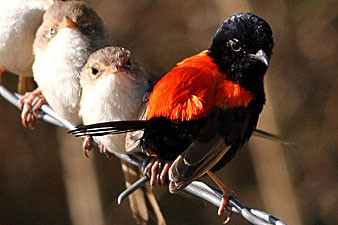
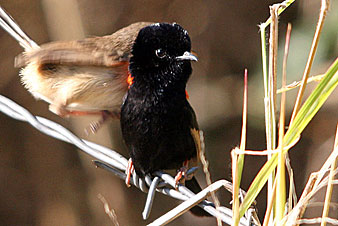
Red-backed Fairy-wren I
did spend the rest of Thursday at my desk doing some of those things I had to do
before I could allow myself to update the website So,
come Friday morning the website update was all ready and waiting for me - then
Eileen popped her head in and said
It
turned out there were two birds out there, a male and a female. The male bird
was calling his regular downward trill,
|
|
Scolding and chattering coming from an
assortment of honeyeaters, scrubwrens and other small passerines often
leads
This time it was an adult Collared Sparrowhawk - a threat indeed to the smaller residents. |
|
|
|
Snapping around the garden |
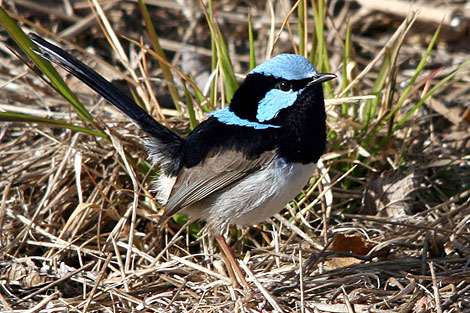
Superb Fairy-wren
|
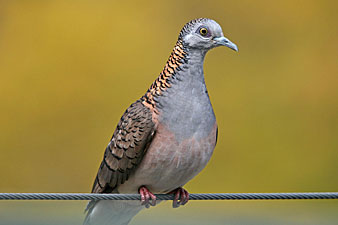
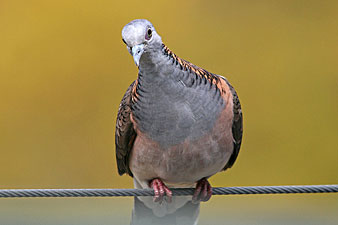 Bar-shouldered Dove on the verandah
|
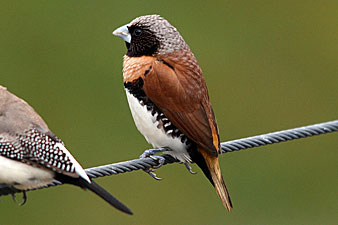
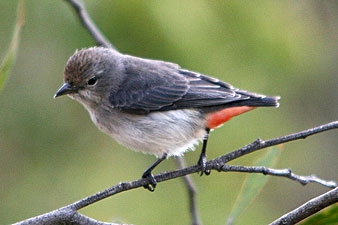 |
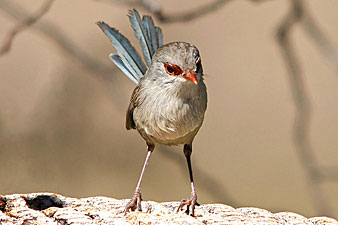 Female Variegated Fairy-wren |
|
|
|
Birds on some local ponds |
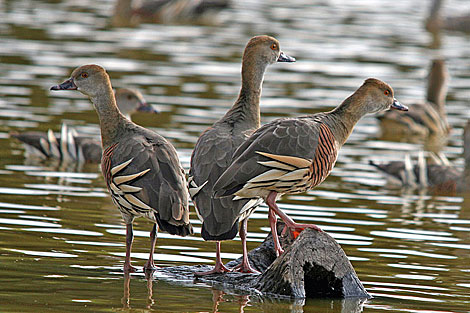
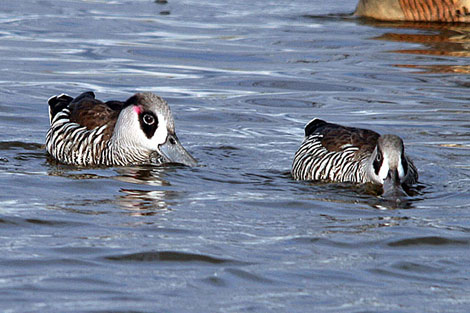
Plumed Whistling Ducks and Pink-eared Ducks on the same small lake.
|
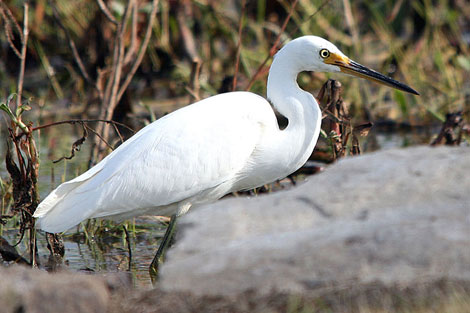
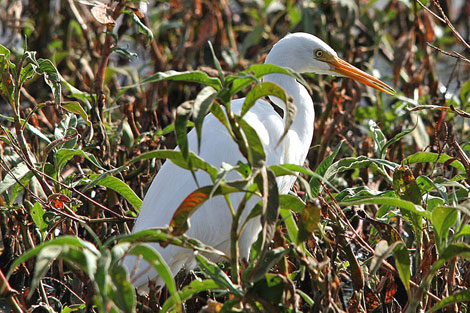
And on the margins of a larger lake nearby, Little Egret and Intermediate Egret.
|
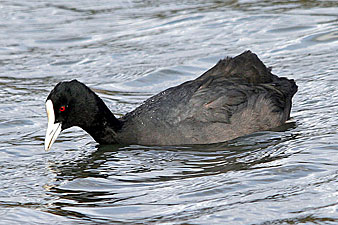
Eurasian Coot |
|
|
|
|
|
21 July 2008 - Plumheads, and more from the garden |
|
A
flock of around a hundred Plum-headed Finches were feeding in a freshly-hoed
paddock just along the road yesterday.
As
Eileen described them, a pleasure of Plumheads. 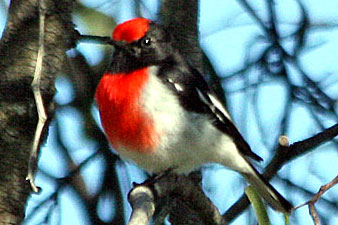
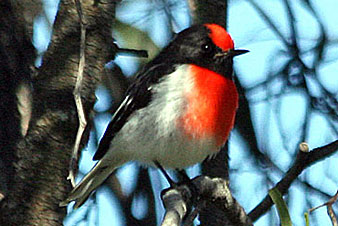
The
Red-capped Robin is still here, and I can't resist taking a few photos
whenever I see him.
And,
a bird that is so common in the garden that I almost never get round to
photographing it, a White-browed Scrubwren.
Yellow
Thornbills are around all the time, mostly working their way through the
tops of trees,
This
Nankeen Night-Heron has taken to roosting very low on the creekbank, and has
favoured this spot regularly for a couple of weeks. The
Eastern Whipbird photo isn't a crisp one, but I'd followed a pair of
whipbirds trying to get a clear shot of them |
|
|
|
|
|
Around the Valley |
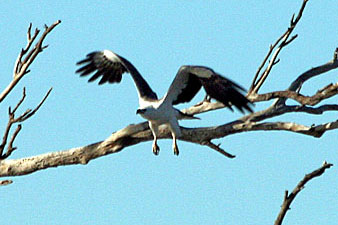
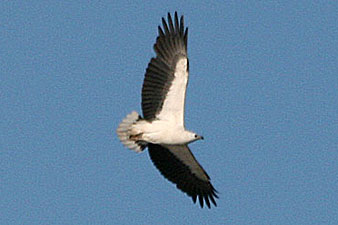
White-bellied Sea-Eagle There are several pairs of White-bellied Sea-Eagles nesting alongside wetlands throughout the valley.
|
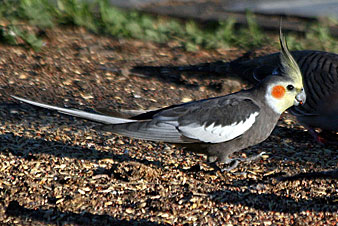
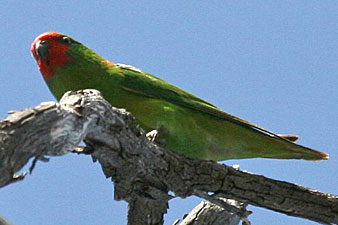 We have a remarkable number of parrots hereabouts. I've recorded 22 parrot species locally - including 16 spp on the house-list here at Abberton. |
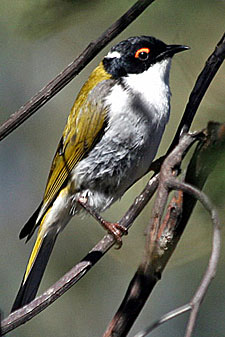 White-naped Honeyeater Our most numerous honeyeater around the
garden just now is the White-throated Honeyeater. The bird above, the White-naped
Honeyeater is The most immediate difference between the
two species for id purposes, |
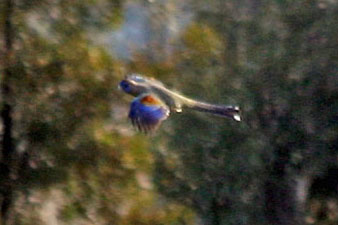
Blue Bonnet We have to travel an hour or two inland to
find resident populations of this gorgeous small parrot.
|
|
|
|
30 June 2008 - Echidna and Grey Goshawk |
|
We see both of Australia’s surviving monotremes at Abberton; Platypus only occasionally, when the creek is at the right height. Short-beaked
Echidna, however, live in the garden and we see them shuffling around from
time to time. Echidnas
are most active at dawn and dusk, but around midday on Monday this one was
feeding on the creek-bank
|
|
|
|
27 June - Robins still, and others |
|
This dainty female Rose Robin has been around now for a couple of weeks,
and a male Golden Whistler has become regular here over the last few days. |
|
The
Red-capped Robin is a regular winter visitor here, this one from
this-morning is our first this year. 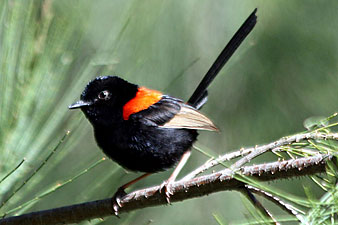
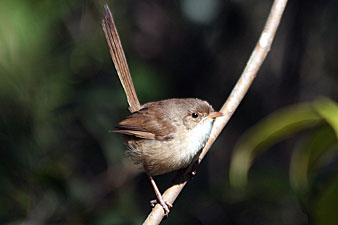
Same goes for the fiery red of the Red-backed Fairywren!
....and the scarlet of the Scarlet Honeyeater. |
|
|
|
6 June 2008 - A Honeyeater at the coast |
|
We
visited friends at the Sunshine Coast the other day.
I’m
pleased with this White-cheeked Honeyeater pic, not least because it is an
opportunistic snap of a bird that just popped up close by on a Banksia in
the coastal scrub. |
|
|
|
2 June 2008 - Birds in the garden |
|
We’ve
had at least three individual Shining Bronze-Cuckoos passing through in the
last couple of weeks. |
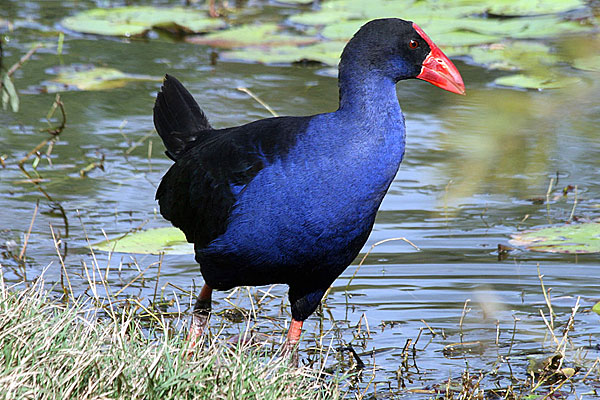
Purple Swamphen
|
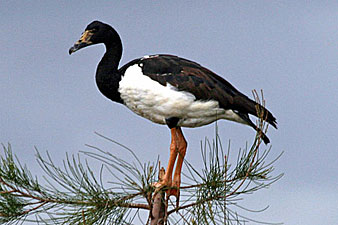
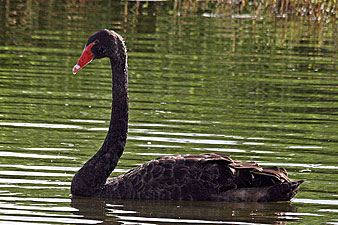
|
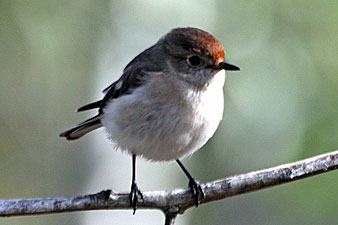
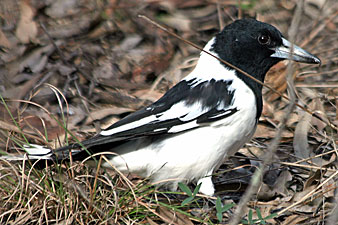
The Red-capped Robin above, and the Little Eagle below are both winter visitors to the Lockyer Valley
|
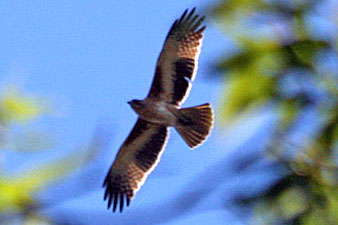
Little Eagle |
|
|
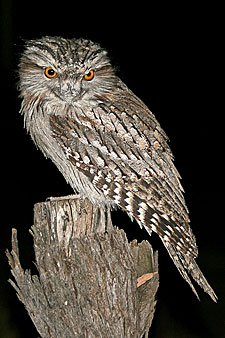
Tawny Frogmouth Just after dark, and just a few yards from our gate, on the way home from shopping.
|
|
|
|
9 May 2008 - Mostly raptors and parrots |
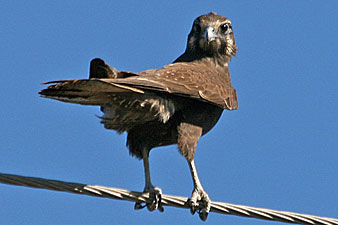
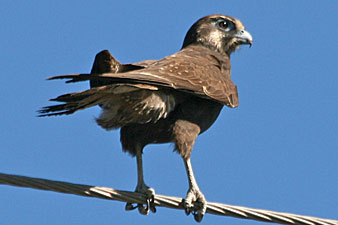
There
are heaps of raptors around the valley right now, some spp in numbers. I
encountered 13 raptor spp over the weekend, including
Spectacled
Monarch still on the Toowoomba escarpment on Sunday (4th May). Fan-tailed
Cuckoo too, Our
garden trees are full of boldly buff-flanked Silvereyes, up from the south,
20 or so on and around a birdbath this-morning. And
in contrast to all this, being Queensland after all, Rainbow Bee-eaters are
still calling and feeding overhead every day. |
|
|
|
25 April 2008 - Brown Goshawk |
|
On
Sunday morning, I had just settled down on the front verandah with the
weekend paper when this second year imm Brown Goshawk dropped into a gum
tree right alongside me. A
furtive reach for the camera, without moving in my seat, and I just got this
pic before it slipped away down to the creekside trees. |
|
|
11
April - Some good Autumn birding I
saw some pretty good birds while I was having my hair cut on the back verandah
yesterday. The first interruption was a Grey Goshawk, which was causing an evident stir along the creekside before flying into a big wattle right across from us. I usually take my camera to the hairdresser’s, and I got off a couple of shaky shots before being snapped back to position in the chair. Four
pm is a good time of day for action in the birdbath, and both the bath and the
adjacent rockpool were simply buzzing with birds, A boldly barred Shining Bronze-Cuckoo dropped into the eucalyptus behind the birdbath, but didn’t venture down to the water.
On
Wednesday afternoon we had a couple of Black Falcons doing circuits here with a
Peregrine Falcon above. We
presently have one, sometimes two, Southern Boobooks roosting in the garden, and
today, Friday, a brightly coloured immature |
|
|
|
28 March 2008 - Non-gardening |
|
Gardeners
pull out Black Nightshade – here’s the reason I don’t. |
|
|
|
9 April 2008 - Black-necked Stork |
|
Here
is a female (yellow-eyed) Black-necked Stork we saw yesterday
|
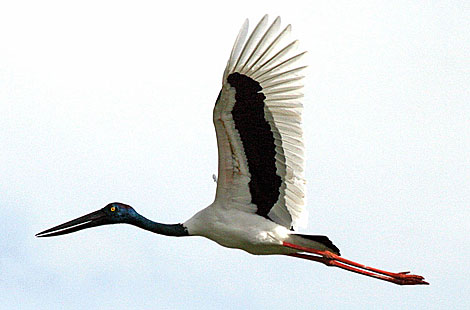
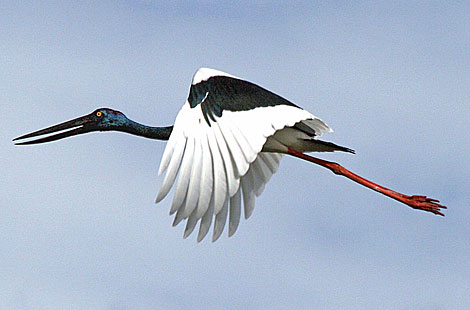
|
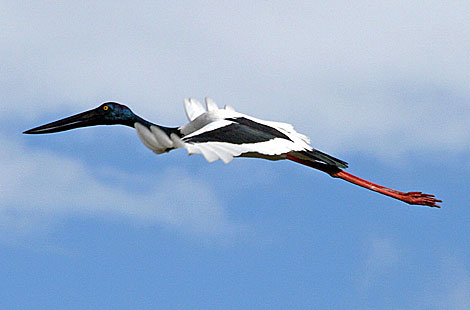
|
|
|
|
4
March 2008 - Variegated Fairy-wren |
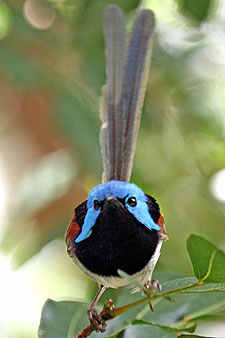
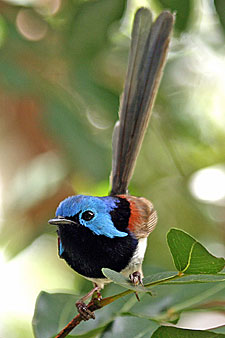
This
male Variegated Fairy-wren and his family live in the garden just around the
house, and he pops up outside my window
|
|
|
|
26 February 2008 |
|
I
had a refreshing morning’s birding around the valley yesterday -
water and waterbirds in all of the Also had a good close view of some Ground Cuckoo-shrikes, often a difficult bird to find.
|
|
|
|
21 February 2008 - A new bird for Abberton! |
|
A
new bird wandered onto our house-list on Tuesday, bringing the total to 209
spp. It is still here on Thursday, an Australian Brush-Turkey It
took 10 years before an Eastern Yellow-Robin turned up, now they're here
year-round and breeding. Much the same story with other forest birds such as
|
|
|
|
February, 2008 - Late summer |
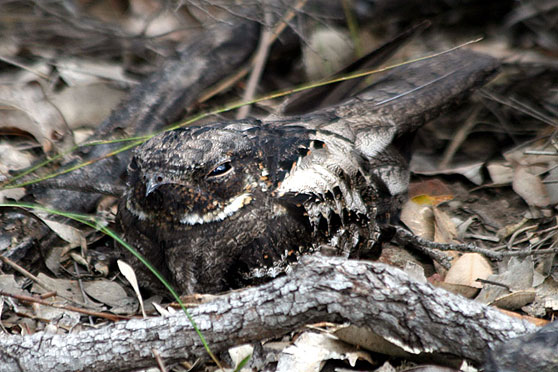 White-throated Nightjar A pair of White-throated Nightjars have
nested on a property not far from here. |
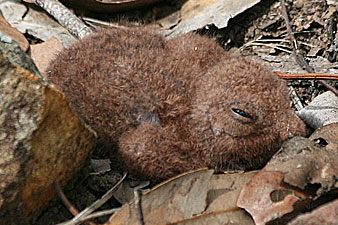
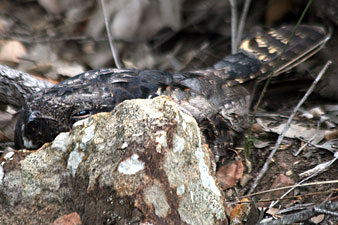
The chick and the other adult nightjar |
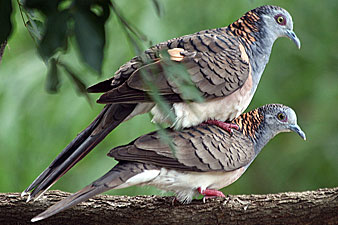
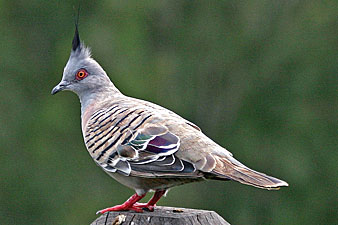
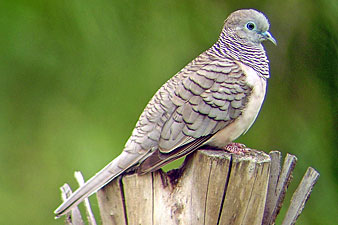
The regular chattering of Spangled Drongos
can sometimes sound a bit like the noisy squawking of Dollarbirds.
|
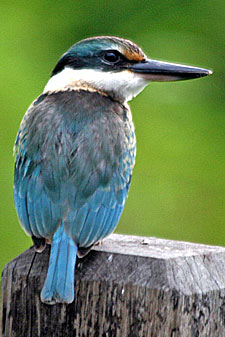
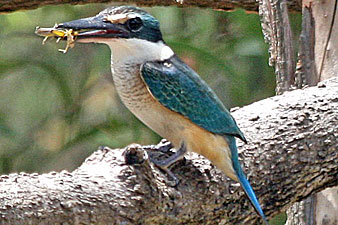
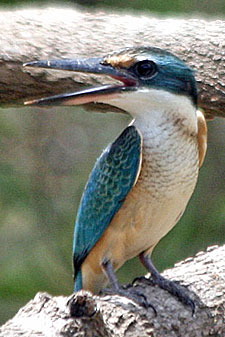
This young Sacred Kingfisher regularly uses the verandah as a vantage point from which to dive for prey.
|
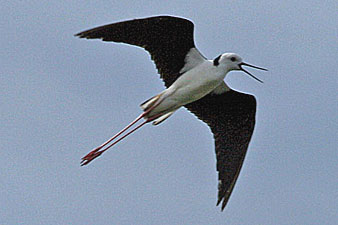
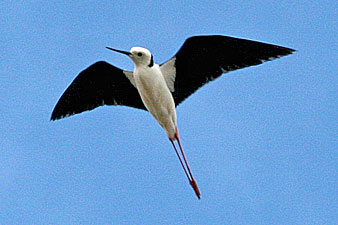
Black-winged Stilts If you wander anywhere near Black-winged
Stilts while they have |
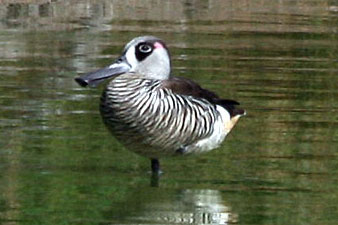
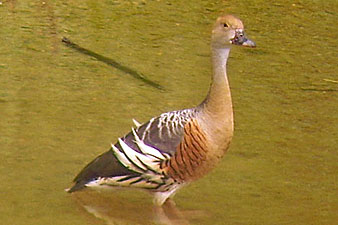 |
|
|
|
January 1, 2008 - Roosting owls |
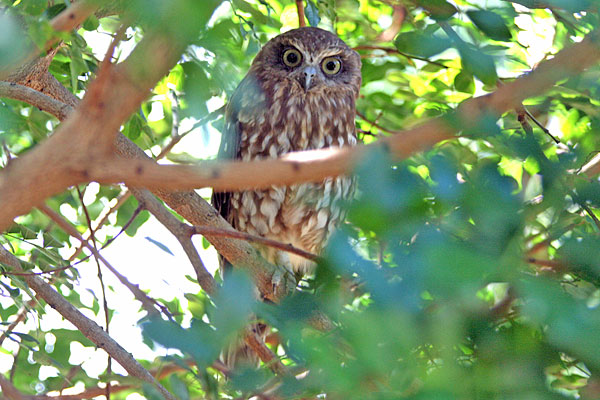 Southern Boobook |
|
Two Southern Boobooks spent the entire New Year's Day adjacent to each other in a tree
just outside my window. These photographs were taken from my desk.
Other birds didn't seem to spot them until
around 7 or 8am, then honeyeaters, fairy-wrens, thornbills and others kept
up a noisy hassle for a few hours.
|
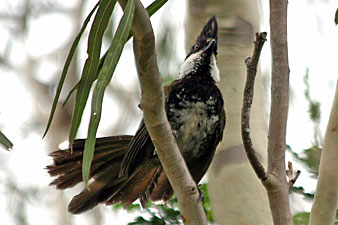
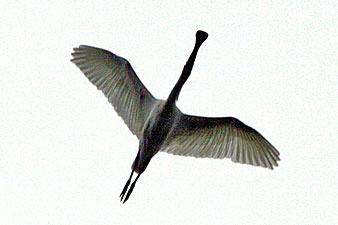
This-morning, at least four and maybe five or
six Eastern Whipbirds
were criss-crossing noisily between eucalypts In the afternoon, the cabaret moved down to a row of creekside casuarinas. The Royal Spoonbill flew overhead while I was watching the Eastern Whipbirds.
|
|
|
|
Late December, 2007 - The creek is back |
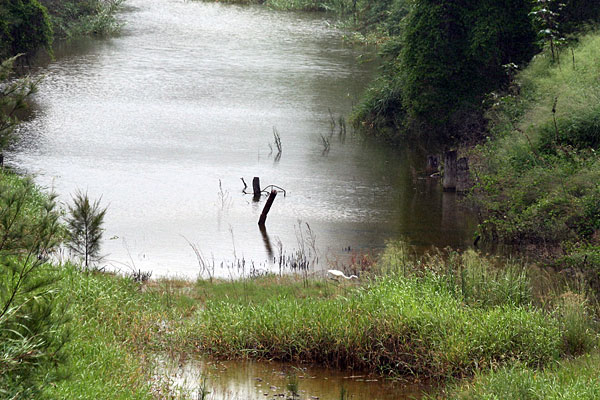 Lockyer Creek at Abberton on New Year's Eve |
|
When
I looked out through the dining-room windows at 5am this-morning, a
Black Bittern was standing in shallow water right in front of the house. However,
just a little to the left of where the bittern had been the Bush-hen was
strolling about in the shallows - calling occasionally as he wandered Around
7am when I took another look through the windows, the Black Bittern was back
again, so I just snapped away through the closed window, |
|
|
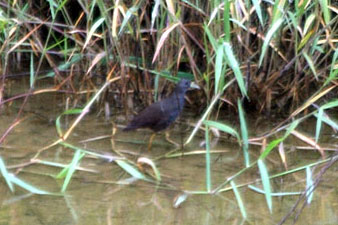
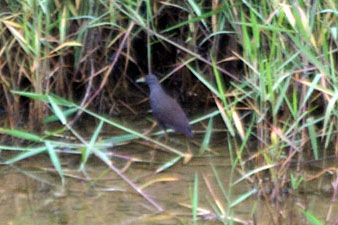
Bush-hen |
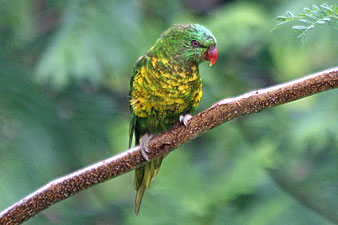 A very wet Scaly-breasted Lorikeet |
